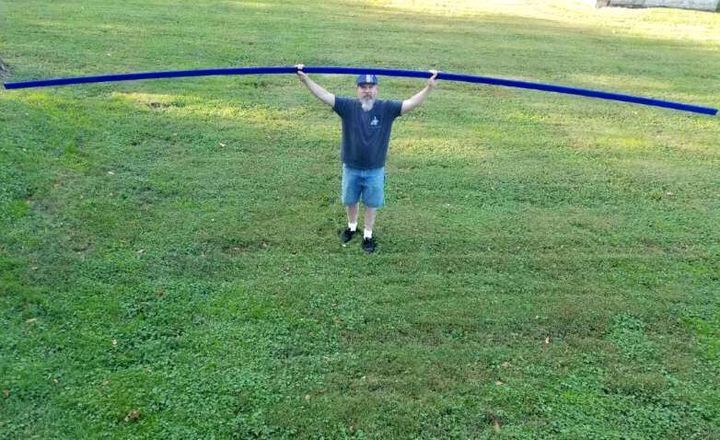
An incredible demonstration of the capabilities of belt 3D printers has been completed: a 6-meter-long part has been produced.
Karl Brown of NAK 3D Designs achieved this incredible feat on a pre-release version of the upcoming 3DPrintMill from Creality, likely as a demonstration of its capability.
Belt 3D Printers
Belt 3D printers are a new form of 3D printing that is quite different from conventional 3D printing. In belt 3D printing, the print surface continuously moves forward, effectively creating an axis of construction with infinite length. This allows the operator to produce very long objects, as was done in this demonstration, or a continuous series of individual objects in “factory mode”.
There have been only a few attempts at belt 3D printing thus far, with Netherlands-based Blackbelt 3D being the first with a viable product. However, that device carries a high price point, and I’m very curious to see whether the 3DPrintMill succeeds at a far lower price. I believe belt 3D printers will become very popular.
6m 3D Printed Rail
Brown 3D printed the 6m (20ft) rail using a pre-release version of the device, but it’s likely quite similar to the version that will be available to the public.
Brown was one of the first on the scene in belt 3D printing with his company, NAK 3D Designs, offering the White Knight open source machine. However, it did not take off commercially, and it seems that Creality has adapted the open source version of the White Knight to develop the upcoming 3DPrintMill. Brown worked with Shenzhen-based Naomi Wu to coordinate with Creality, and you can read our exclusive interview with her on this work here.
Brown explains that this incredible 3D print job took only 20 hours to complete, which seems pretty fast for an object of this size. However, it seems that he used a 0.8mm super-wide nozzle and printed 0.4mm layers. This would have trimmed the print time significantly as more material is deposited during extrusion. How much? The 0.8mm nozzle is 4X the area of a standard 0.4mm nozzle.
The other interesting aspect of this demonstration is how Brown extended the print beyond the device itself. The print must be supported after it departs from the belt because if unsupported the leverage created by gravity would eventually pull the fresh print off the bed. To overcome this effect, Brown installed a couple of long roller-style conveyor belts upon which the 3D print would ride. In theory, you could keep adding these to make the prints even longer.
Brown posted a time-lapse video of this historic 3D print:
In watching this video, I admit I was most concerned about the camera cable becoming unplugged, but fortunately Brown supplied an extra-long cable for the job.
Brown told us there was only 800g of filament used for the print. For such long print jobs one would think you’d have to use larger-sized spools or be ready to swap them when the filament-out sensor triggers, but apparently you can 3D print huge items with even one spool of material.
Belt Implications On 3D Printing
For many, the belt 3D printers are an interesting curiosity, but I’ve read many comments previously of people expressing a complete lack of interest in the concept. Personally, I believe belt 3D printing will be a very important part of the future, as the ability to 3D print larger objects on inexpensive equipment will become quite attractive.
Aside from the doubters, there are plenty of folks lining up to acquire the 3DPrintMill when it is released, presumably later this year.
I’m wondering whether Brown’s 6m rail demonstration will change some minds on the concept, as he’s clearly shown it is quite possible to produce extremely large structural parts with this style of 3D printing.
I’m also wondering what the heck he intends to run on that rail.
Via YouTube
